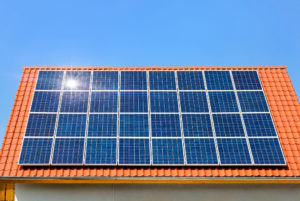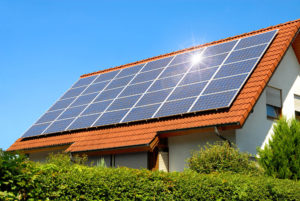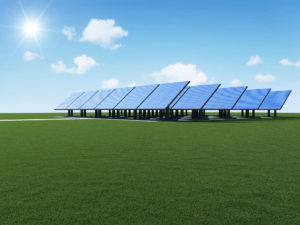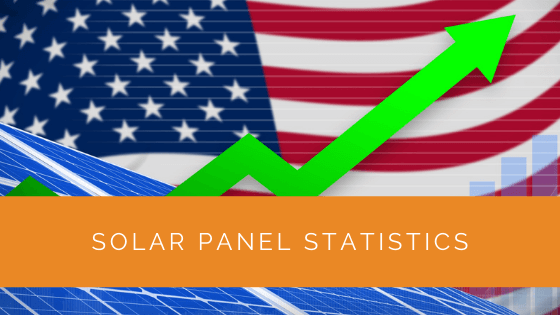Lately, solar energy has been making quite the splash across the U.S. There are numerous solar energy sources, with solar photovoltaics and concentrating solar thermal power (C.S.P.) being the most common ones.
Additionally, solar panels are becoming a common sight in households, workplaces, and industries across the U.S. Are you interested in learning more about solar panels?
This post will walk you through some of the most amazing statistics related to solar panels in and around the U.S. What’s more, we will also cover the statistics related to solar energy in general. So, dive right into our post without further ado, and let the numbers do all the talking!
Contents
The Statistics You Need to Know About Solar Panels in the U.S.
This section has rounded up all the statistics related to solar panels, their electricity production capacity, and their usage across the U.S. These are the numbers that matter, so make sure to give them a good look!
Costs and Prices
As solar panels became popular across the U.S., it was inevitably followed by a significant reduction in the price of solar panels. According to the Office of Energy Efficiency and Renewable Energy, the cost of Solar P.V. Panels has dropped by nearly 70% since 2014.
Solar power plants, driven by solar photovoltaic panels, also have many cost-related advantages over other non-renewable sources of energy. For instance, get this: the Levelized cost of installing a new solar P.V. falls between $36-$44. For coal, the same Levelized cost range is between $60 and $143.
Location, Size, and Capacity
 The DeepSolar project by Stanford University used satellite imaging, semantic segmentation, and applications like ImageNet and Google Inception V3 to study the location, size, and capacity of solar panels across the U.S.
The DeepSolar project by Stanford University used satellite imaging, semantic segmentation, and applications like ImageNet and Google Inception V3 to study the location, size, and capacity of solar panels across the U.S.
They found that across 48 states in the country, nearly 1.47 million of them are in use.
Efficiency
Solar energy technology has shown remarkable progress over the years. Solar panels had relatively lower efficiency in the past, but technological advancements have led to significant improvements. For instance, there has been a substantial increase in the overall efficiency of solar panels. This progress demonstrates the potential of harnessing solar energy more effectively. The impressive aspect is that these improvements in solar panel efficiency have occurred over a relatively short period, showing rapid advancements in the field.
Durability
Another great thing about solar panels is their ability to last long. On average, most U.S. solar panels come with a warranty of 20 years. However, Solstice found that the panels can operate with high efficiency for 35-40 years despite the warranty lapse.
The stats are incredible when it comes to the durability of solar panels. For instance, it is estimated that most solar panels installed across the country can withstand wind speeds higher than 80 miles per hour!
Population Density and Solar Panels
In the U.S., residential solar panel installations are very common. The DeepSolar project by Stanford University discovered an interesting correlation between population density and solar panel installations.
According to them, residential solar installations are more likely to be found in areas with a population density higher than 1000 capita/mile^2.
On average, an American household requires around 20 solar panels to generate sufficient solar power to meet their electricity needs. This will also help them cut the price and save money.
Floating Solar Panels
 The U.S. Department of Energy has tapped into an innovative source of solar energy: floating solar panels. These panels are meant to be deployed in utility scale solar energy projects.
The U.S. Department of Energy has tapped into an innovative source of solar energy: floating solar panels. These panels are meant to be deployed in utility scale solar energy projects.
What’s more, they believe that upon installing floating solar photovoltaics across the reservoirs in the U.S., they will be able to produce electricity that would be enough to power 10% of the nation.
Community Solar Energy Sources
There is a pressing need for solar farms as a community solar energy source. A study by Pew Research Center reported that over 84% of Americans are strong supporters of this cause.
Community solar projects have been massively successful in the U.S. Data suggests that nearly 3.4 gigawatts of community solar photovoltaic projects have been installed in 2020 alone.
Here are more interesting global solar energy stats. You don’t need lots of sunshine to generate solar energy. In 2019, Massachusetts, New York, Minnesota, and Colorado were the country leaders in having the most utility scale solar projects. And 3 of these states report cloudy conditions for a greater part of every year.
Solar Panel Imports
Around 79.6% of Photovoltaic imports that the U.S. received between January and August in 2019 came from just four countries: Malaysia, Vietnam, South Korea, and Thailand.
Affordability
Despite solar photovoltaic panels having so many benefits, not everyone can afford them. Around 80% of Americans cannot afford to install rooftop solar photovoltaics.
Get this: if a solar panel was installed on the rooftop of every American home, together, they could generate enough power to meet 40% of the U.S. electricity needs. That’s why there’s a great incentive in making solar panels more affordable than they already are.
The U.S. Solar Energy Statistics you Cannot Ignore
In the U.S., solar energy is one of the most common sources of renewable energy. If reports are to be believed, since 2013, solar has ranked second across the U.S. in terms of the electricity capacity added annually. To learn more about such interesting solar energy statistics, continue reading this section:
Solar Energy and the U.S. Electricity
Have you ever wondered about the energy sources that power America? As of February 2021, solar energy catered to nearly 2.3% of the U.S.’s total electricity generation. That’s about 91 billion kilowatt-hours of energy production. Isn’t that amazing?
Research reports from the solar industry in the U.S. indicate that since 2010, the total installed solar capacity has only grown exponentially. For instance, in 2011, data showed that the installed solar electric capacity stood at 8000 MWdc. As of today, the capacity stands at 110,000 MWdc and continues to grow.
The solar industry research also revealed that out of all the solar energy and solar power sectors, the utility-scale and residential sectors posted the highest increase in installed solar capacity over the years. This proves that an increasing number of American homeowners are willing to make the switch to solar energy.
Solar Farms
 Now, for some statistics on the solar farms in the U.S. The country’s largest solar farm is the Solar Star. What’s more, this solar farm is also the biggest in the entire world! The Solar Star is situated in California. With approximately 1.7 million solar photovoltaic panels installed, the farm sprawls across 13 square kilometers.
Now, for some statistics on the solar farms in the U.S. The country’s largest solar farm is the Solar Star. What’s more, this solar farm is also the biggest in the entire world! The Solar Star is situated in California. With approximately 1.7 million solar photovoltaic panels installed, the farm sprawls across 13 square kilometers.
The Solar Star has two sections, namely the Solar Star 1 and the Solar Star 2. Together, the two sections can generate a whopping 579 MW of solar energy. This is enough to supply electricity to around 255,000 U.S. households.
The other major solar farms across the U.S. are as follows: the Topaz Solar Farm, the Ivanpah Solar, the Agua Caliente Solar Project, and the Crescent Dunes Solar Energy Project. When taken together, on average, the five solar farms have a capacity that’s more than enough to supply 1,951 MW of solar power.
For several years, California has been the country leader in solar energy. However, of late, states like Texas and Florida have also begun to embrace solar power, thereby spurring rapid growth in the solar energy market. This could also mean that by 2030, the U.S.A. solar capacity and solar energy supply is set to witness further increase.
Costs of Solar Energy
While the prices of residential solar P.V. systems have seen a steady decline over the years, the data indicates that the soft overhead costs of installing a solar panel remain high. These include costs of installation, labor, and inspection.
Solar Energy and the American Job Sector
IREC’s Solar Jobs Census data revealed that the solar industry employs around 242,000 workers. This means that the solar energy sector has more staff than the coal, natural gas, and other non-renewable energy sectors put together.
Given all the solar energy stats, the future of solar energy in the U.S.A. looks promising. Data has shown that many new solar plants are all set to be installed. The overall growth forecast for the solar industry suggests that the community could grow by 20-30 times within ten years.
Solar Power and the Environment: Important Statistics
- It has been established beyond doubt that solar energy is more environment-friendly than other sources of energy, like natural gas, coal, and petroleum. We have compiled a list of statistics to show you the complete picture of the environmental benefits of solar energy.
- The sun is one amazing energy source. Get this: the sun produces enough solar energy to cater to the global energy requirements every second. Here’s another huge incentive for going solar!
- Americans can easily cut carbon dioxide emissions by 70 million metric tons every year by switching to solar power.
- If we were to install solar power sources to meet all U.S. electricity needs, we would only need 13,600,000 acres of land to install solar panels. And, these panels would take up just 0.5% of the total U.S. land area.
- Solar energy statistics show that if an American household sustained solar power for an entire year, it would have an environmental impact equivalent to planting 122 saplings.
- Not only does the solar energy industry help in reducing carbon dioxide emissions, but the stats show that solar installations and their solar capacity can reduce coal burning by 8,000 pounds, thereby preventing further environmental damage.
- It’s not surprising that solar has ranked second on the list of the U.S.A. renewable energy sources. The energy produced by the sun in an hour is enough to power the entire world for a year.
- If you thought that renewable energy was the only environmental benefit of solar panels, you’re mistaken. Around 90-97% of solar panels are made from materials that you can recycle easily.
- As people across the country become increasingly aware of the consequence of climate change, solar installation is also on the rise. Around 58% of people who installed solar panels said they did so because they provided clean energy that did not contribute to climate change.
- Even some of America’s biggest oil conglomerates are going solar. The Bloomberg New Energy Finance reported that in the fifteen years between 2002-2017, the oil firms had inked nearly 109 deals with numerous solar energy firms.
Expert Insights From Our Solar Panel Installers About Solar Panel Statistics
Understanding the dramatic drop in the cost of solar panels over the last decade is crucial for homeowners and businesses considering making the switch to renewable energy. With prices falling nearly 70% since 2014, solar power is not only environmentally beneficial but also economically advantageous.
Senior Solar Consultant
The advancements in solar panel efficiency over a relatively short period are truly remarkable. Improved technology has significantly increased the energy conversion rates of solar panels, making them a viable and reliable energy source for more households and industries.
Solar Technology Specialist
The correlation between population density and residential solar panel installations highlights the growing acceptance and adoption of solar energy in urban areas. As more people recognize the financial and environmental benefits, we can expect to see continued growth in solar installations across densely populated regions.
Residential Solar Expert
Experience Solar Excellence with Us!
Trust in Solar Panels Network USA, where our seasoned experts deliver top-quality solar solutions for homes and businesses nationwide. With a legacy of countless successful installations and a commitment to sustainable energy, we’re your reliable partner in the solar journey. Ready for a brighter, eco-friendly future? Call us now at (855) 427-0058 and harness the power of the sun!
Summing Up
This post was all about statistics related to solar panels and solar energy statistics. The statistics are important, as they provide us with valuable insights by placing solar energy in the larger context of U.S. electricity needs.
Further, the solar energy statistics also inform us about other aspects, like solar installation, the solar energy market, the solar energy electric capacity, and the price of solar energy. It is in this regard that the statistics related to solar panels also become relevant.
Additionally, the solar energy statistics speak volumes about the massive environmental benefits of solar energy while establishing how a switch to solar energy sources can help households save money.
We hope that this post was informative and entertaining. If you’d like to see more solar panel and solar energy statistics, let us know. We are listening!
About the Author
Solar Panels Network USA stands at the forefront of solar energy solutions, driven by a team of seasoned solar engineers and energy consultants. With over decades of experience in delivering high-quality solar installations and maintenance, we are committed to promoting sustainable energy through customer-centric, tailored solutions. Our articles reflect this commitment, crafted collaboratively by experts to provide accurate, up-to-date insights into solar technology, ensuring our readers are well-informed and empowered in their solar energy decisions.

